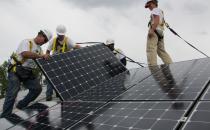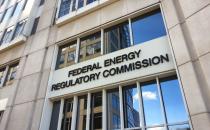FERC rightly rejects utility front group while discouraging renewable energy growth
Within the same week, the Federal Energy Regulatory Commission rightly rejected a sweeping attack on rooftop solar net metering policies, while separately discouraging renewable energy deployment through regulatory rollbacks.
Senior Attorney Lauren Bowen, who is closely monitoring both cases, shares the details on each move.
In April, a suspected utility-front group called the New England Ratepayers Association requested that the Commission take federal jurisdiction over state and utility net metering programs and gut the compensation rates for any crediting or netting components around electricity production from a solar system.
“NERA’s petition would have increased utility bills for more than 2 million solar net metering customers across the country, including more than 40,000 solar customers here in our region, 90,000 if you include Florida,” says Bowen, leader of SELC’s Solar Power Initiative. “FERC’s unanimous decision to dismiss the petition is welcome news and a huge relief for rooftop solar across the country and the Southeast under threat from this petition.”
SELC filed extensive comments on behalf of Southeast public interest organizations, joining a chorus of over 50,000 individuals and 600 organizations, states, regulators, and elected officials opposing NERA’s attack on net metering that has now been dismissed by the Commission.
Unfortunately, not all the news out of FERC this week was positive for solar.
The Commission also just announced its draft final regulations implementing PURPA, a federal law meant to encourage independent power production from renewable energy resources. While we do not yet have the full details of the Commission’s final rule, we are concerned that it will have the adverse effect of actually discouraging renewable energy deployment.
PURPA provides one of the few opportunities for clean energy competition in states still dominated by monopoly electric utilities. In the Southeast, inconsistent implementation of PURPA has led some states to successfully deploy significant solar resources while others lag far behind.
“Ideally, FERC would have strengthened PURPA implementation across the board to ensure that states still lagging behind in renewable energy deployment would catch up,” says Bowen. “Unfortunately, it appears that the Commission’s final PURPA rule revisions will do the opposite.”


